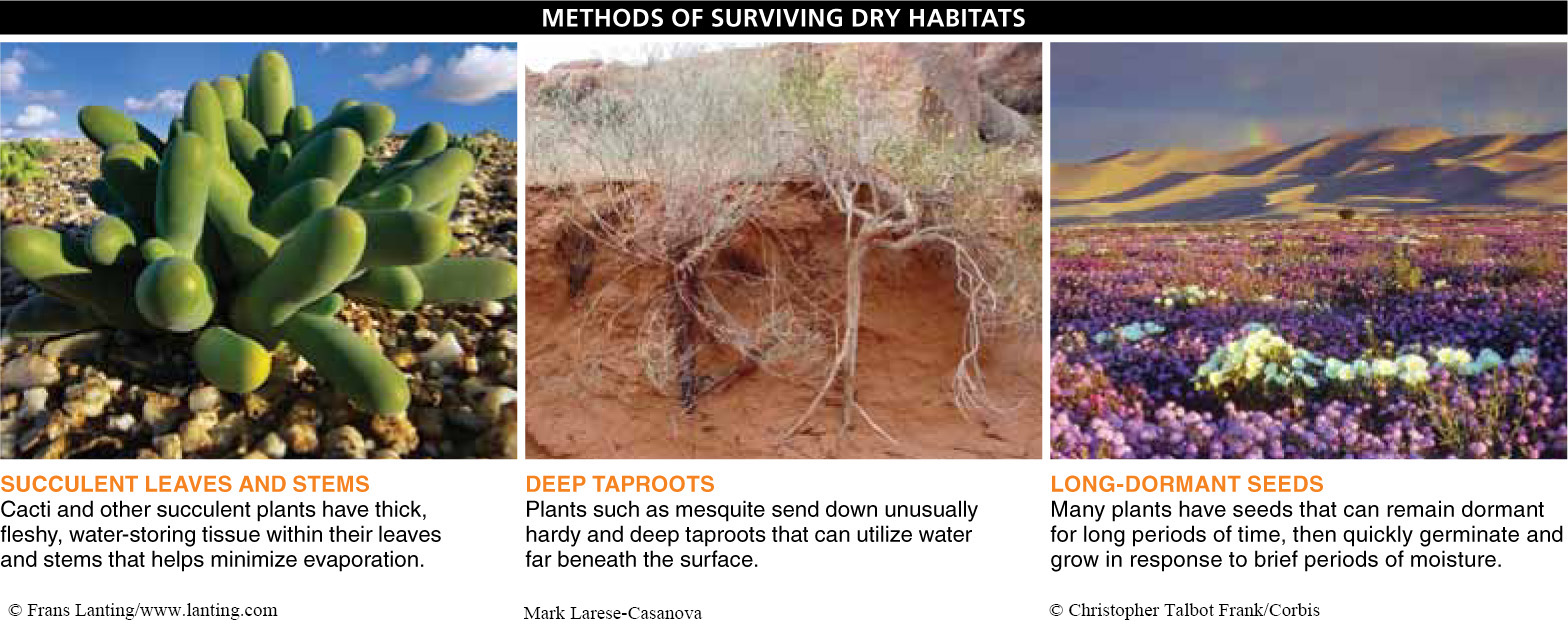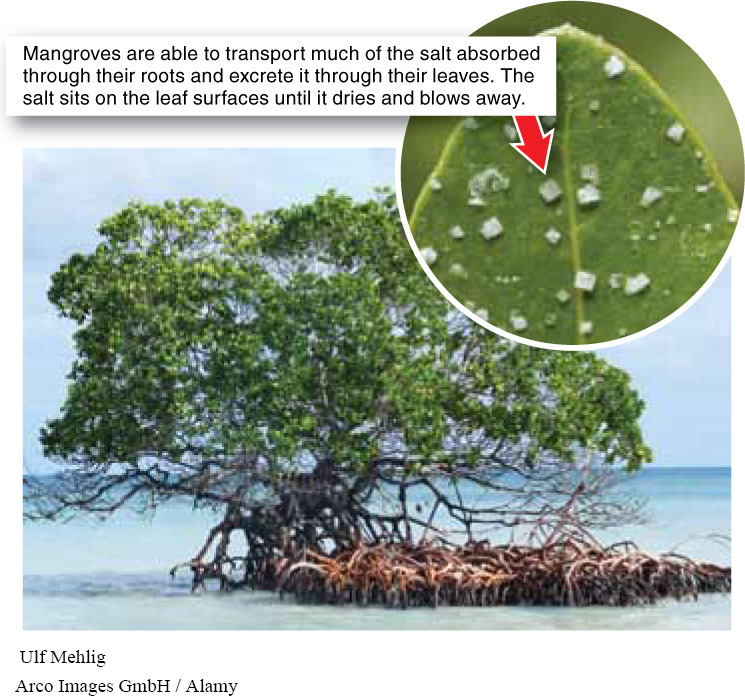Just as evolution has produced plant adaptations to deter herbivory, so, too, have a variety of plant adaptations evolved as responses to the non-
Super-

Succulent leaves and stems. The evolution of thick, fleshy, water-
Deep taproots. If water conservation is one strategy of dry-
Long-
Salty Environments Marshes and intertidal zones may have pleasant temperatures and plenty of moisture, but extreme levels of salt from the ocean and large fluctuations in salt concentrations can make it difficult for cells to maintain the appropriate salt concentration in the cytoplasm for optimal metabolic functioning (FIGURE 19-6). Plants adapted to saltwater environments are generally unable to reduce the large amounts of salt they absorb with water through their roots. So how do they survive? They transport much of the absorbed salt to vacuoles within their cells, thus isolating and containing it where it has little impact on cellular metabolism. Some plants—
769
Cold and Windy Habitats At both extreme latitudes and extreme elevations, life can be hard: the air is cold, sunlight is limited, the growing season is short, and the winds can be brutal and relentless. As a consequence, plants living in these habitats tend to grow close to the ground and have smaller-
Arctic habitats present an additional challenge. Because the first few meters of soil below the ground surface stay perpetually frozen (called permafrost if it remains below freezing for two or more years), root growth is limited, and any water that is present from precipitation or melting cannot drain well. In high-


TAKE-HOME MESSAGE 19.3
In the course of evolution, plants have become adapted to some of the most extreme of the world’s habitats, including super-
What are two adaptations that plants have evolved to survive cold, windy habitats?
Plants in cold, windy habitats grow close to the ground and have smaller-than-average leaves. Additionally, in areas with permafrost, plants are small with diffuse, shallow root systems.
770